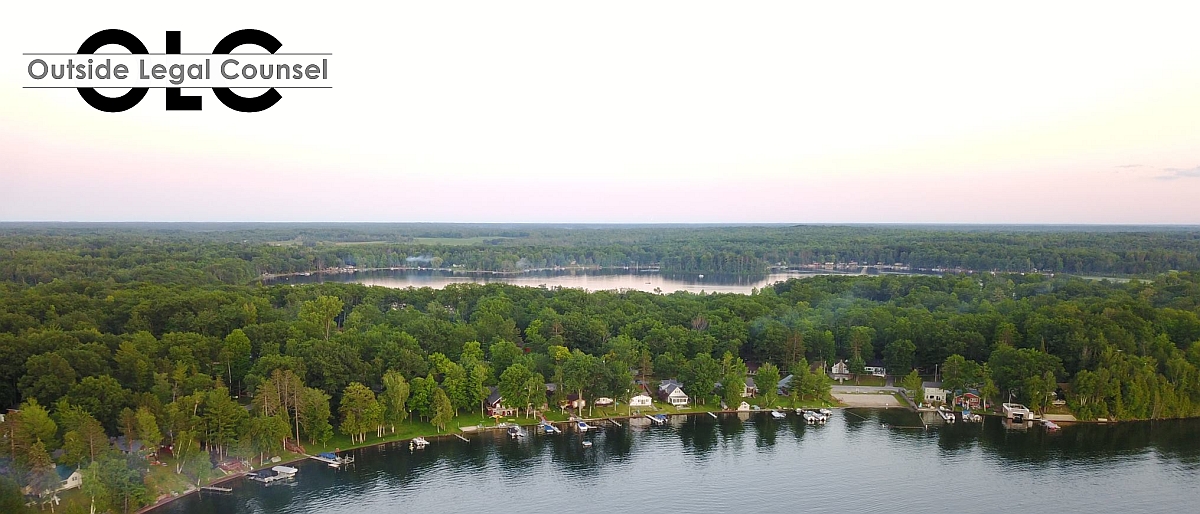Many properties in Michigan, whether on lakes or in cities, are covered by restrictive covenants. Restrictive covenants, sometimes called deed restrictions, are private-party agreements that run with or ‘go with’ the land and control any number of uses and prohibitions for the use of property. These property restrictions are usually created by a subdivision developer or by a vote of a group of property owners.
Michigan law has recognized that these restrictions are usually valid, valuable, and exist under the the freedom to contract. The Supreme Court has explained:
Such contracts [i.e. restrictive covenants] allow the parties to preserve desired aesthetic or other characteristics in a neighborhood, which the parties may consider valuable for raising a family, conserving monetary value, or other reasons particular to the parties.
However, not all restrictions are enforceable. Certain prohibitions on the basis of race, religion, or other protected class are legally unenforceable.
An interesting case is making its way through the court system which placed a quota on the number of Catholic owners of property of a summer cottage association just outside of Petoskey, Michigan. Many of these cases are defended on religious freedom or free association rights under the First Amendment with varying success.
However, basic issues like building types or structural set backs are the usual issues the parties disagree about, including how or to what extend these restrictions are to be enforced.
For example, in Thiel v Goyings, the Goyings installed a house that comprised of three modules manufactured offsite, brought to the subdivision lot on a trailer, and assembled onsite. A restrictive covenant imposed on the subdivision provided that:
No manufactured homes whether classified as a mobile home, modular home, or otherwise, and no prefabricated homes shall be permitted on any Parcel in the Premises; regardless of which building codes are applicable to said homes.
The Goyings defended arguing that their home was a “systems built” home and was not a manufactured home. They also argued that other restrictions where never previously enforced. After a trial, the circuit court concluded that the house was “sufficiently constructed, valued, and congenial as to allow it to remain.” Trial courts often times take great steps to try to avoid what is commonly viewed as an unjust result of removal or destruction of the offending structure.
On appeal, the Court of Appeals reversed and explained it “acknowledges that these types of cases are difficult and that the trial court strived to find an equitable solution,” but the systems-built home was in clear violation of the unambiguous restrictive covenant.
In uncharacteristically direct decision for an appeals court, it ordered that the trial court had no choice but to order the removal of the house–an expensive and drastic remedy.
According to the Court of Appeals decision:
Defendants’ labored attempt to argue that a modular home is just as good as a stick built on site home is of no consequence in the face of the plain reading of the restrictive covenant. The construction and value of the home is not at issue and, in fact, defendants’ tactic in presenting numerous witnesses who testified that defendants’ home was high-quality and that any assumption to the contrary was unfounded supports the basis for the restrictive covenant. Justified or not, there is a perception that modular homes are of lesser quality and will bring -7- down the value of the neighborhood. The restrictive covenant was drafted for that precise reason. The trial court was not at liberty to decide whether it agreed with the covenant; it was required to enforce the restrictions as written.
The take away is clear: check for deed restrictions and/or restrictive covenants before purchasing property in a subdivision or summer resort association. Also check out the bylaws and regulations of any homeowners & property owners’ association which also might have some restrictive rules. Failure to do so can result in a drastic outcome–the destruction of your structure or home.

